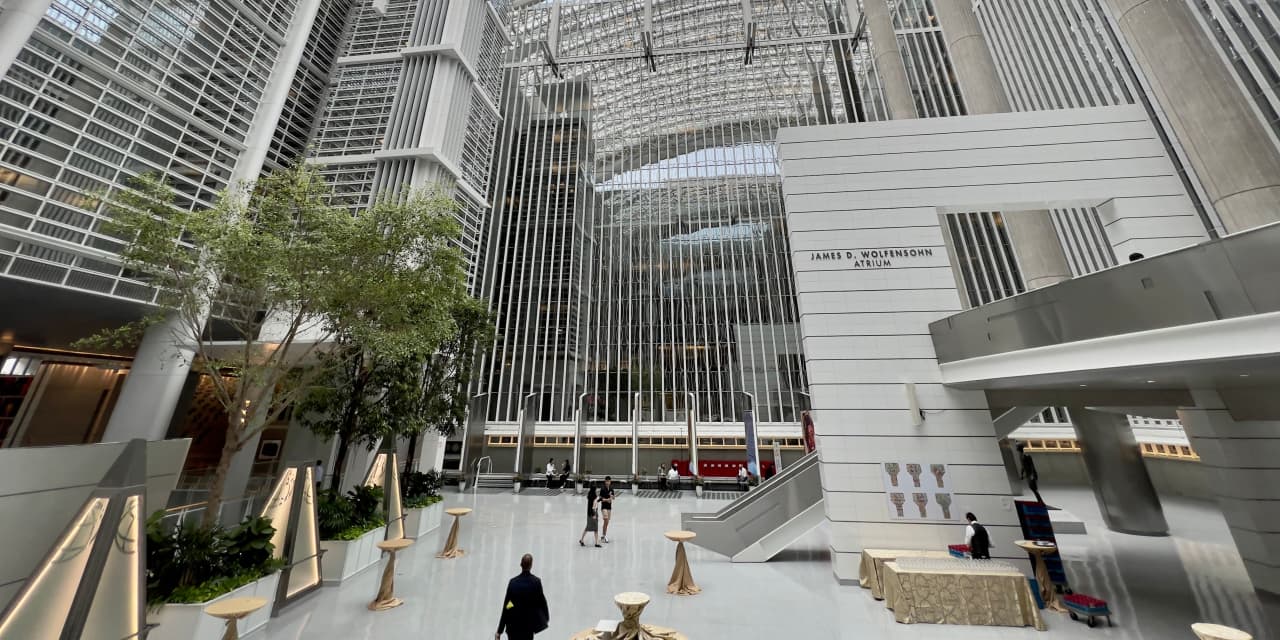The James D. Wolfensohn Atrium of the World Bank Headquarters in Washington, D.C., on June 23, 2023.
Daniel Slim/etty Images
About the author: Masood Ahmed is the president of the Center for Global Development, a global think tank. He previously served in senior roles at the World Bank and International Monetary Fund.
The signals had been building for a year, but this month’s Group of 20 summit made it clear. The Biden administration sees reform of the World Bank and the International Monetary Fund as a major U.S. priority.
The institutions need an upgrade to better support developing countries in tackling poverty and dealing with the climate crisis. At the summit in India, the president brought a financing package that would increase the lending capacity of the two institutions by $50 billion and challenged the other G20 members to bring this to a total of $200 billion.
The U.S. is the largest shareholder in the World Bank and the IMF. That means the renewed focus from the White House and Treasury is good news for both these institutions, and more importantly, for the people they are meant to serve in the global south.
The World Bank and other development banks have a critical role to play in fighting climate change and rolling back the devastating poverty setbacks caused by Covid. But as an independent group of experts recently pointed out to the G20, those institutions will need both more resources and a new way of doing business. Delivering change on this scale is a multi-year endeavor for most organizations, and international financial institutions are no exception.
That is why the thought uppermost in the minds of advocates for multilateral development bank reform is “We’re delighted the U.S. is back, but will it go the distance on this challenging path and convince others to join?” That sentiment reflects the reality that the necessary scale of ambition can only be realized with strong U.S. leadership.
In the short term, the proposed funding package must be approved by a Republican-controlled House of Representatives—not a foregone conclusion. The administration will also need to persuade allies to deliver their share; so far, their reaction has been a deafening silence.
In parallel, the management of the MDBs must see through ambitious reforms so they can deliver at the necessary scale and speed. A culture of risk aversion and work silos has to be replaced with one where success is judged more by how effectively the MDBs help their clients mobilize public and private resources to truly transform their economies. None of this is easy and none of it will happen without the sustained engagement of the U.S.
Down the road, the U.S. will also need to deal with two politically difficult issues.
First, the World Bank, and some other regional banks, will need increases in their basic capital to operate at the necessary scale. MDB capital increases are a hard lift because they require consensus among all member countries and because they raise the thorny issue of adjusting voting shares to reflect the relative size of China and other faster-growing countries. The current U.S. proposal for the World Bank gets around this by relying on shareholder guarantees, which essentially have donor countries backstopping funding rather than fully committing new fiscal resources. These are a good option but can only go so far. At some point, if the U.S. wants a financially strong institution operating at scale, it and other shareholders will need to support a general capital increase. Indeed, it’s notable that the U.K. and France seem more favorable to a straightforward capital increase under the right conditions.
It’s also worth remembering that the amounts involved are relatively small and used highly efficiently. In its 78-year-history, the World Bank has taken less than $20 billion of paid-in shareholder capital and leveraged it into over $800 billion of long-term development finance. Other regionally focused development banks are similarly effective. Finally, a capital increase provides a strong signal of shareholder confidence to financial markets and helps keep down borrowing costs.
The second issue is the role of China. A bigger World Bank provides borrowing countries with a more transparent and competitive alternative to the terms offered by many Chinese banks but, more importantly, it can encourage China to play a more collaborative and financially sustainable role in development. To that end, it’s more effective to have China as an engaged and committed shareholder in the MDBs rather than trying to freeze it out. As a condition of increased shareholding, the U.S. and its allies should press China for a greater commitment to the operational norms and practices of these institutions, including avoidance of unsustainable debt buildups. An early test will be whether Chinese authorities step up with a much-increased contribution to the upcoming replenishment of the International Development Association, the World Bank arm for lending to the poorest countries.
The focus on multilateral development banks at the G20 meetings was a promising sign. But commitments and declarations are easy; the difficult part is yet to come, and reform efforts are already at risk of losing momentum. Finding common ground among China and other G20 members, delivering the necessary financing, and seeing through the transformations in how these institutions run will take sustained engagement, even as global attention moves to other issues. None of that can happen without the leadership of the U.S. If the Biden administration is serious about international financial institution reform—and it must be, given the scale of the climate crisis and the need to make progress on global poverty—it must stay the course and see these reforms to the end.
Guest commentaries like this one are written by authors outside the Barron’s and MarketWatch newsroom. They reflect the perspective and opinions of the authors. Submit commentary proposals and other feedback to [email protected].
Read the full article here










